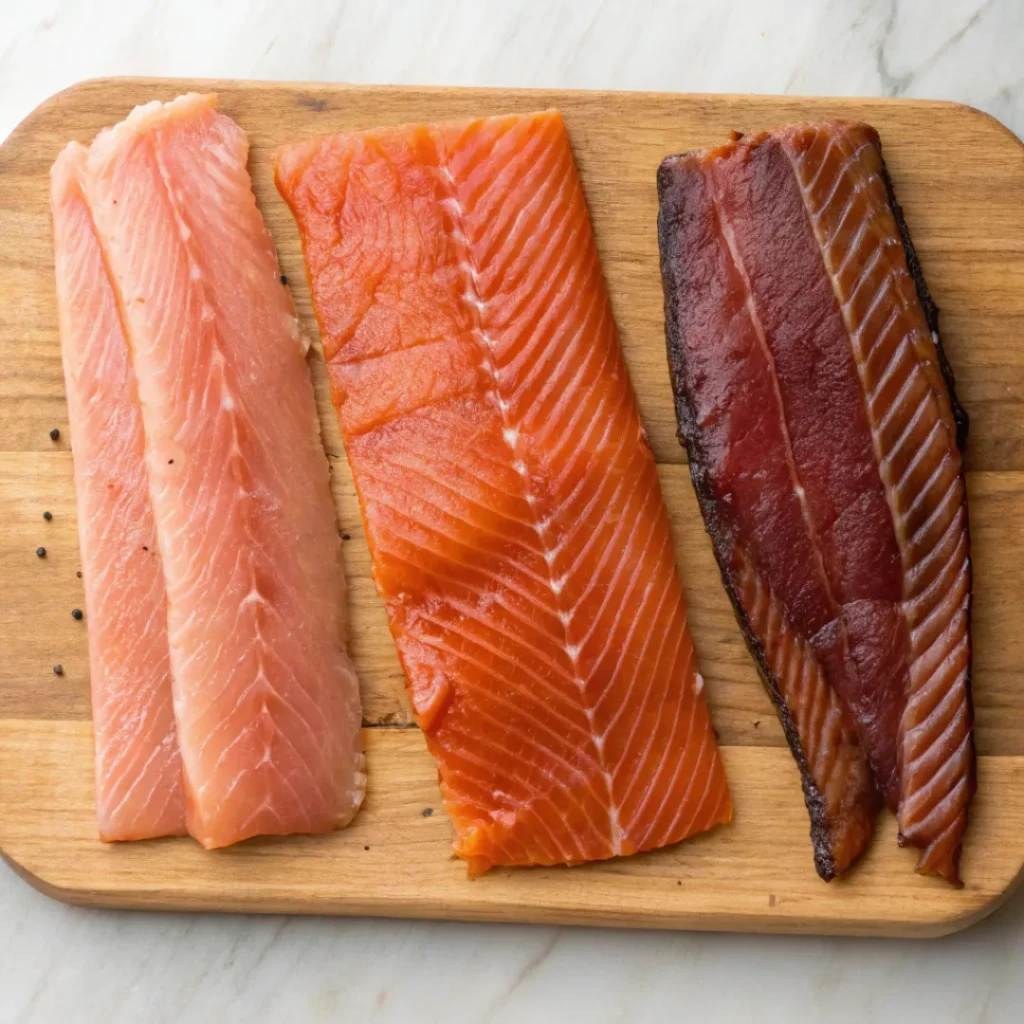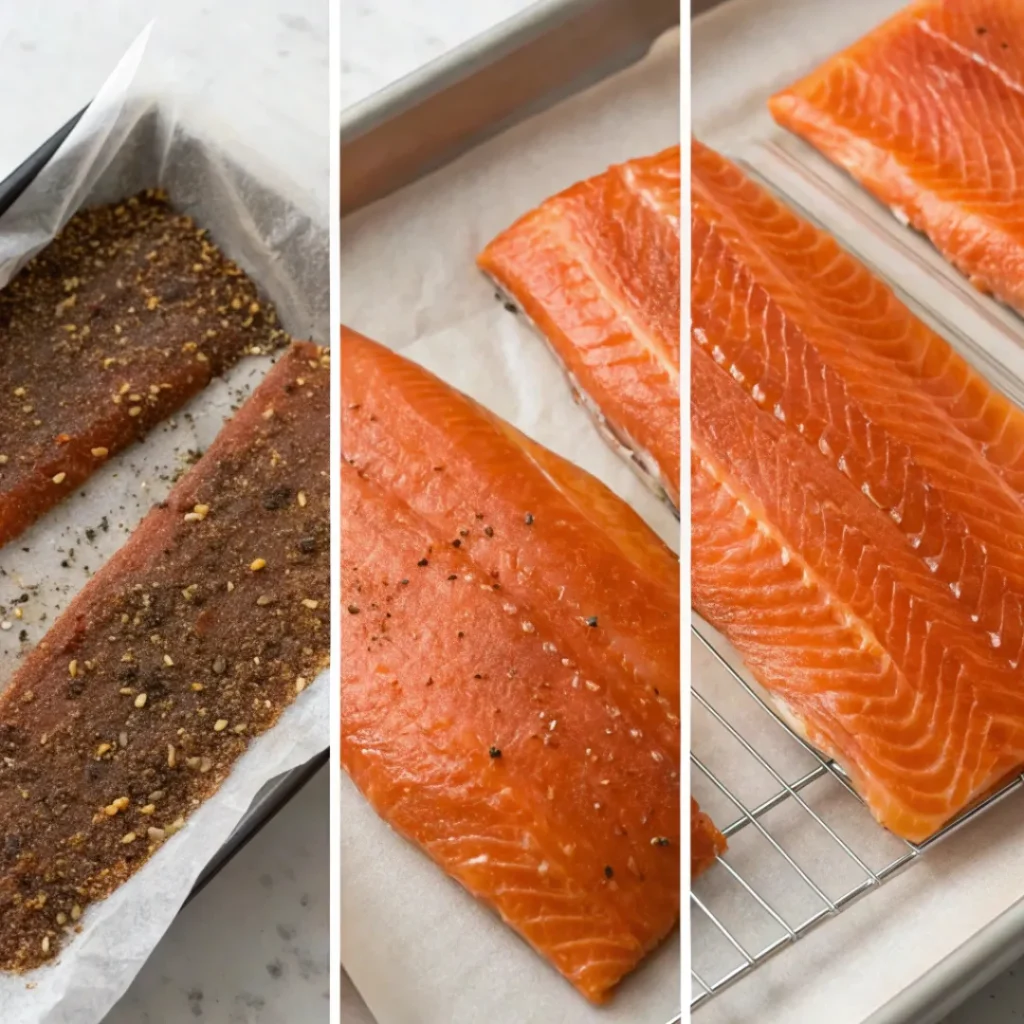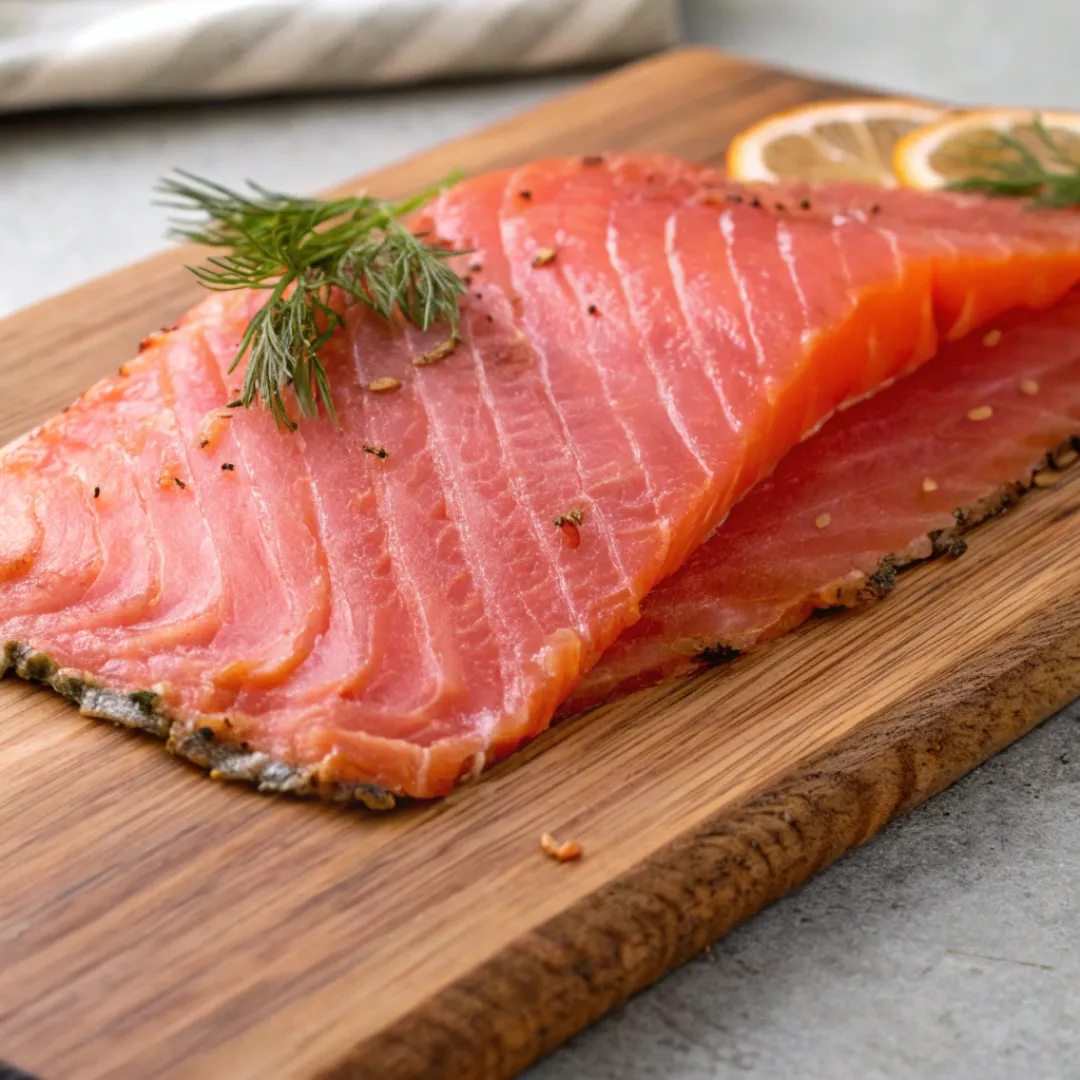Smoked salmon is a beloved delicacy that many cultures have enjoyed for centuries. Known for its rich, smoky flavor and tender texture, it’s a versatile ingredient that can elevate both gourmet dishes and simple snacks. But what exactly is this delicacy, and why do so many people love it? In this comprehensive guide, we’ll dive deep into everything you need to know about this popular seafood—its history, types, preparation methods, culinary uses, and its impressive health benefits. Whether you’re a seasoned fan or new to this delicious food, this guide will provide you with a deeper appreciation for this culinary delight.
What Is Smoked Salmon?
This type of cured fish undergoes a smoking process to preserve it and enhance its flavor. Generally, the process involves curing with salt and then smoking it using either hot or cold methods. As a result, the process produces a tender, flavorful, and slightly salty product that you can enjoy in various ways.
The Basics of Smoking
Curing
To begin with, the process involves curing the salmon with salt. This draws out moisture and preserves the fish. Some methods also include sugar, herbs, or spices to add flavor.
Smoking
After curing, the smoker infuses the salmon with smoke using one of two methods—cold smoking or hot smoking. Both methods impart a unique flavor to the fish, but they differ in temperature and duration.
Types of Smoked Salmon
When it comes to this delicacy, different types offer unique characteristics. Here’s a look at the most common types:

Cold-Smoked Salmon
What It Is: Cold-smoked fish cures with salt and smokes at a low temperature, typically between 70-90°F (21-32°C). This method does not cook the fish, resulting in a silky, tender texture.
Flavor Profile: It provides a mild, delicate flavor with a light smokiness. This type retains the smooth texture of raw salmon, making it perfect for thin slicing.
Uses:
- Bagels and Cream Cheese: Cold-smoked varieties shine on a bagel with cream cheese, capers, and red onions.
- Canapés and Appetizers: Use this fish to make elegant appetizers like smoked salmon with crème fraîche on blinis.
- Salads: This variety adds a rich, savory touch to salads, especially when paired with greens, avocado, and citrus.
Hot-Smoked Salmon
What It Is: Hot-smoked fish cures and smokes at a higher temperature, typically between 120-180°F (49-82°C). Because of this, the process cooks the fish, giving it a firmer texture compared to cold-smoked varieties.
Flavor Profile: Hot-smoked fish offers a stronger smoky flavor and a meatier texture. Thus, it works well when flaked into dishes.
Uses:
- Salads: Hot-smoked fish is perfect for adding to pasta or potato salads, as its firm texture holds up well.
- Breakfast Dishes: Incorporate it into scrambled eggs or omelets for a protein-rich breakfast.
- Sandwiches: Use this type as a filling for sandwiches and wraps, adding a smoky, savory taste.
Lox
What It Is: Lox doesn’t undergo smoking. Instead, it cures with salt and sometimes brines. A staple in Jewish cuisine, lox often comes from the belly of the fish, making it rich and fatty.
Flavor Profile: Lox offers a salty and buttery taste with a texture similar to cold-smoked varieties but without the smoky flavor.
Uses:
- Bagels: Lox tastes best when served on bagels with cream cheese, onions, and capers.
- Sushi Rolls: Use it in sushi rolls for a savory, rich addition to the dish.
How Do You Make Smoked Salmon?
The process of making smoked salmon combines ancient preservation techniques with modern culinary practices. If you’re interested in smoking salmon at home, you can follow this detailed guide on how to smoke salmon from Serious Eats. It covers everything from selecting the right fish to choosing the best wood and smoking method, making it a great resource for beginners and experienced home cooks alike.

Selecting the Fish
Smoked salmon’s quality starts with the fish selection. Typically, wild-caught salmon offers a richer flavor and firmer texture, while farmed salmon is more readily available and often less expensive.
Curing the Salmon
Curing involves applying a dry rub of salt or a wet brine. The time required for curing varies depending on the size of the fillet and the desired level of saltiness. This step is crucial because it preserves the fish and enhances its flavor.
Drying the Salmon
After curing, the salmon dries for a few hours. This step allows the surface of the salmon to form a sticky layer called the pellicle, which helps the smoke adhere to the fish.
Smoking the Salmon
Once dried, the salmon moves to the smoker, where it absorbs the flavors of wood smoke. In fact, the choice of wood, such as alder, hickory, or applewood, directly impacts the final flavor of the smoked salmon. Cold-smoking results in a raw texture, while hot-smoking fully cooks the fish.
Packaging
After smoking, producers vacuum-seal the salmon to lock in its freshness. Proper packaging prevents moisture loss and extends the shelf life of the product.
Health Benefits of Smoked Salmon
Smoked salmon isn’t just a treat; it also provides numerous health benefits:
Rich in Omega-3 Fatty Acids
Salmon is famous for being high in omega-3 fatty acids, which are essential for heart health. Omega-3s help reduce inflammation, lower blood pressure, and support brain health. A single serving of smoked salmon can fulfill a significant portion of your daily omega-3 needs.
High in Protein
Smoked salmon serves as an excellent source of protein, making it a great option for muscle maintenance and repair. In particular, protein is vital for muscle repair, immune function, and overall body maintenance.
Good Source of Vitamins and Minerals
Smoked salmon packs vitamins like B12, D, and A, along with minerals such as selenium and potassium. For example, vitamin B12 supports energy production and brain health, while vitamin D aids bone health and immune function.
Low in Calories
For those monitoring caloric intake, smoked salmon is nutrient-dense yet relatively low in calories. This makes it an ideal choice for those looking to maintain a balanced diet while enjoying a rich, satisfying protein source.
Culinary Uses of Smoked Salmon
This seafood’s versatility makes it a favorite among chefs and home cooks alike. Here are some creative ways to include it in your meals:
Breakfast and Brunch
Bagels with Smoked Fish
Layer thin slices of cold-smoked fish over a toasted bagel with cream cheese, sliced red onions, and capers.
Smoked Fish Eggs Benedict
Swap the traditional Canadian bacon for this fish in this brunch classic.
Smoked Fish Frittata
Add pieces of hot-smoked fish to a frittata with spinach, tomatoes, and cheese for a protein-packed breakfast.
Appetizers and Starters
Smoked Fish Crostini
Top toasted baguette slices with whipped cream cheese, fish, and fresh dill.
Smoked Fish Roll-Ups
Spread cream cheese on thin slices of the fish, roll them up, and serve as elegant appetizers.
Smoked Fish Dip
Blend it with Greek yogurt, lemon juice, and herbs for a creamy dip perfect with crackers and veggies.
Main Dishes
Smoked Fish Pasta
Toss hot-smoked fish with pasta, cream, garlic, and lemon zest for a quick, flavorful dinner.
Smoked Fish Salad
Mix with greens, avocado, cucumber, and a lemon vinaigrette for a refreshing meal.
Smoked Fish Pizza
Spread crème fraîche over a pizza crust, top with smoked fish, arugula, and capers for a gourmet twist.
Sushi and Sashimi
Smoked Fish Nigiri
Use thin slices of cold-smoked fish over rice for a simple yet delicious sushi option.
Smoked Fish Roll
Combine it with avocado, cucumber, and cream cheese for a classic roll.
Smoked Fish Sashimi
Serve thin slices with soy sauce and wasabi for a light, delicate appetizer.
Tips for Storing and Serving Smoked Salmon
Proper storage maintains the freshness and flavor of smoked salmon:
Refrigeration
Store smoked salmon in the refrigerator at 38°F (3°C) or lower. Once opened, consume it within a few days.
Freezing
Freeze smoked salmon for up to three months. Wrap it tightly in plastic wrap and place it in a freezer-safe bag to prevent freezer burn.
Serving
Serve smoked salmon chilled or at room temperature for the best flavor. Avoid overheating it, as this can alter its delicate texture.
Flavor Pairing Tip
Smoked salmon pairs beautifully with citrus flavors, especially lemon, which adds a bright, zesty contrast to its rich and smoky profile. For instance, many recipes recommend a squeeze of fresh lemon over smoked salmon to enhance its taste. If you want to explore more about why lemon pairs so well with other flavors like blueberries, you might find this guide interesting: Why Do Lemon and Blueberry Go Together?.
Frequently Asked Questions
Is smoked salmon cooked or raw?
The smoking method determines whether it is cooked or raw. Cold-smoked fish remains raw, while hot-smoked varieties cook during the smoking process.
How long does it take to smoke a salmon?
Cold smoking takes around 12-24 hours, while hot smoking typically takes 4-6 hours due to higher temperatures.
Can I eat smoked salmon directly?
Yes, you can eat it straight from the package. It’s ready-to-eat as long as it has been properly cured and smoked.
What pairs well with smoked salmon?
This fish pairs well with cream cheese, avocado, eggs, salads, and crackers, offering numerous options for a balanced and flavorful meal.
Conclusion
This fish’s rich flavor and versatility make it a star ingredient in many dishes. Whether you enjoy the delicate taste of cold-smoked varieties or the hearty texture of hot-smoked options, it is a luxurious food that offers both taste and nutrition.
From breakfast dishes to sophisticated appetizers and hearty main courses, this seafood can turn everyday meals into gourmet experiences. So, the next time you’re planning a meal, consider adding it to elevate your culinary creations.

